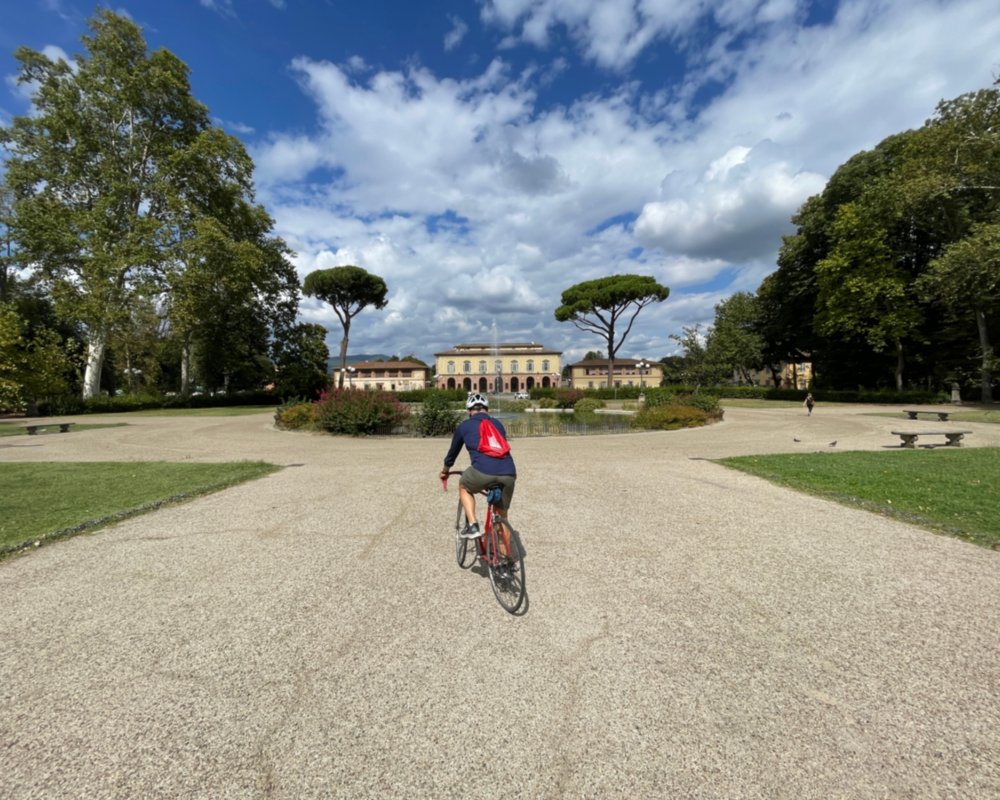Lungarno and the Cascine Park
The Cascine Park is the city's green lung and the largest public park in Florence, an ideal place to practice sports or spend leisure time in nature and beauty.
The first nucleus of the Park was the Cascine dell'Isola estate, purchased in 1531 by Duke Alessandro I de’ Medici for agricultural and hunting purposes. The construction of the Palazzina Reale, in the Cascine square, dates from 1785. During the Napoleonic period, Elisa Baciocchi, Grand Duchess of Tuscany, permanently transformed the Cascine into a Public Park.
The itinerary starts from Piazza Vittorio Veneto, near which is the “Park of Music and Culture”, a large multipurpose facility designed in 2008. It is one of the most avant-garde buildings of its kind in Europe, home to the Florence Opera House and the Maggio Musicale Fiorentino.
We begin our route on the Abraham Lincoln riverfront, skirting to the right the Giardino della Catena, a park area designed in 1871 in the Romantic style, with fountains, lawns and areas of undergrowth.
We cross the tramway tracks of the first bridge over the Arno, and after a hundred meters we take a right on the first driveway and then a left, to cross the park in the cool shade of the linden trees along the Viale della Catena; at your choice, and depending on the weather, you may also choose to stay in the sunshine of the Lungarno.
Shortly after we parade past the Pavoniere (peacock cages), a building so named for the presence of two neoclassical temples, once used to hold birds, to decorate the park. In the area today is the Municipal Pool with a restaurant and coffee bar and a bike and roller-skate rental point.
Continuing to pedal, we soon reach the Palazzina Reale and the large Piazzale delle Cascine, the architectural pivot of the Fattoria Granducale. To the left of the Palazzina is the large lawn of the Quercione, the largest meadow in the Cascine.
In case the time has come for a stop, we could take a short detour on Via delle Cascine, to the right of the Palazzina Reale, and in a few hundred meters reach the Manifattura Tabacchi, a former industrial area conceived in the 1930s by Engineer Pier Luigi Nervi in the rationalist style. Subject in recent years of a major urban regeneration project, it houses spaces for event, artist residences, artisan workshops, food services and stores, including a bike sale/rental/repair store and Social Ride animator.
Back at the Piazzale delle Cascine, we continue along the Viale dell'Indiano that takes us to the far end of the park, where the Mugnone stream flows into the Arno. Here is the monument to the young Indian prince Rajiaran, who died in Florence in 1870 at the age of twenty-one. His body was burned according to Hindu ritual at the confluence of two rivers, and his ashes were scattered here. The nearby Palazzina dell'Indiano (Indian Building) is a venue for events and a refreshment point.
To begin our return, we pass the footbridge over the Mugnone stream, alongside the Palazzina, and we arrive under the Ponte dell’Indiano (Indian Bridge). The viaduct is one of the most important cable-stayed bridges in Italy (that is, supported by steel cables connected to two large piers anchored to the ground, with no supporting piers in the river). The bridge has an underlying hanging footbridge that will allow us to cross the Arno safe from traffic, in order to arrive comfortably on the opposite bank and begin the return trip along the left bank's bike/pedestrian path. The terrain is mostly dirt but well-trodden and smooth and will allow us to ride while enjoying beautiful views of the Arno.
At our leisure, we can choose whether to cross the river again at the first bicycle/pedestrian footbridge or to continue to the tramway bridge, which is closed to car traffic but allows pedestrians and bicycles.
Whatever our choice, having crossed the Arno all we have to do is turn right to return safely to our starting point.


